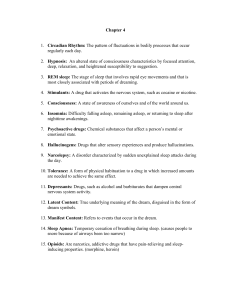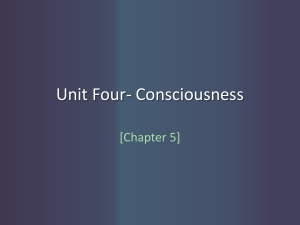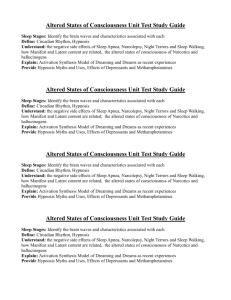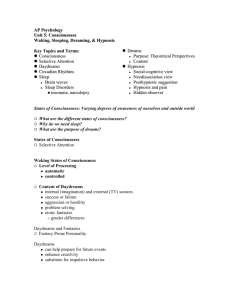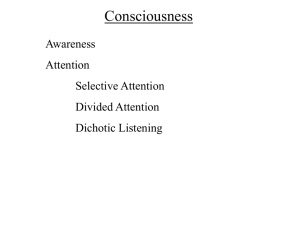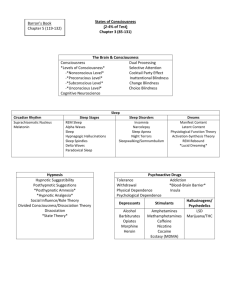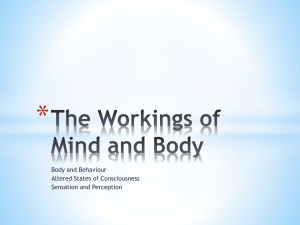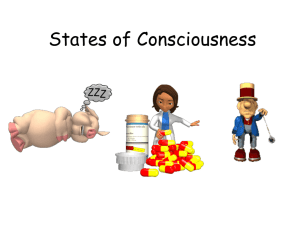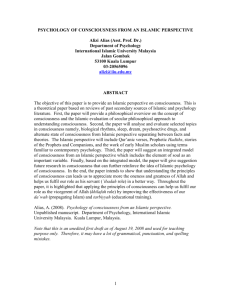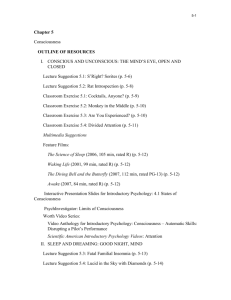- WW Norton & Company
advertisement
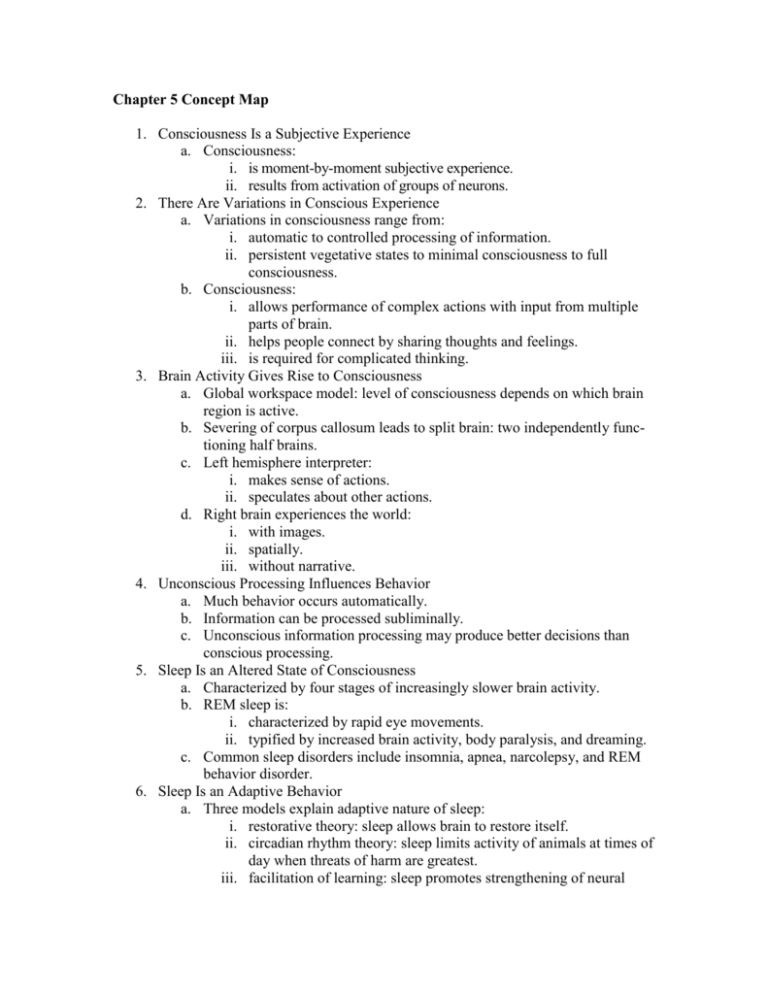
Chapter 5 Concept Map 1. Consciousness Is a Subjective Experience a. Consciousness: i. is moment-by-moment subjective experience. ii. results from activation of groups of neurons. 2. There Are Variations in Conscious Experience a. Variations in consciousness range from: i. automatic to controlled processing of information. ii. persistent vegetative states to minimal consciousness to full consciousness. b. Consciousness: i. allows performance of complex actions with input from multiple parts of brain. ii. helps people connect by sharing thoughts and feelings. iii. is required for complicated thinking. 3. Brain Activity Gives Rise to Consciousness a. Global workspace model: level of consciousness depends on which brain region is active. b. Severing of corpus callosum leads to split brain: two independently functioning half brains. c. Left hemisphere interpreter: i. makes sense of actions. ii. speculates about other actions. d. Right brain experiences the world: i. with images. ii. spatially. iii. without narrative. 4. Unconscious Processing Influences Behavior a. Much behavior occurs automatically. b. Information can be processed subliminally. c. Unconscious information processing may produce better decisions than conscious processing. 5. Sleep Is an Altered State of Consciousness a. Characterized by four stages of increasingly slower brain activity. b. REM sleep is: i. characterized by rapid eye movements. ii. typified by increased brain activity, body paralysis, and dreaming. c. Common sleep disorders include insomnia, apnea, narcolepsy, and REM behavior disorder. 6. Sleep Is an Adaptive Behavior a. Three models explain adaptive nature of sleep: i. restorative theory: sleep allows brain to restore itself. ii. circadian rhythm theory: sleep limits activity of animals at times of day when threats of harm are greatest. iii. facilitation of learning: sleep promotes strengthening of neural connections. b. Sleep deprivation leads to: i. problems in mood and cognitive performance. ii. problems with immune system. iii. eventually, death. 7. People Dream while Sleeping a. Non-REM sleep → brain deactivation + mundane dreams. b. REM sleep → brain activation + vivid, intense dreams. c. Three theories of dreaming: i. Freudian: dreaming reveals unconscious conflicts with manifest content and latent content; there is no evidence to support this theory. ii. activation-synthesis theory: dreams result from mind’s attempts to make sense of random neural activity. iii. evolved threat-rehearsal theory: dreams are rehearsals of strategies for coping with threatening events. 8. Hypnosis Is Induced through Suggestion a. Consciousness can be altered through hypnosis, meditation, and immersion in activity. b. Hypnosis: i. is a social interaction in which a person responds to suggestion. ii. involves hypnotic induction and posthypnotic suggestion. iii. can be useful for pain management. c. Two theories of hypnosis: i. socio-cognitive theory: person “acts” hypnotized. ii. dissociation theory: hypnosis is a trancelike state where awareness is separated from other aspects of consciousness; there is significant evidence to support this theory. 9. Meditation Produces Relaxation a. Meditation: i. focuses attention on external object (concentrative) or sense of awareness (mindfulness). ii. leads to relaxation as well as physical and psychological benefits. 10. People Can Lose Themselves in Activities a. During flow: i. person becomes absorbed in activity (e.g., religion, exercise). ii. consciousness is altered. b. Escapist pursuits can reduce self-awareness, but can have negative results. 11. Psychoactive Drugs a. Are mind-altering substances. b. Change the brain’s neurochemistry by activating neurotransmitter systems. 12. Stimulants a. Interfere with reuptake of dopamine. b. Increased release of dopamine → increased behavioral and mental activity. 13. People Use—and Abuse—Many Psychoactive Drugs a. Marijuana activates cannabinoid receptors → enhanced mental activity, memory impairment, and altered pain perception. b. Cocaine prevents reuptake of dopamine → confidence, alertness, and sociability. c. Amphetamines (e.g., methamphetamine): i. block reuptake of dopamine. ii. eventually damage frontal lobes. d. MDMA (ecstasy): i. is associated with serotonin release. ii. may lead to memory impairment. e. Opiates increase pleasure by binding with opiate receptors and activating dopamine receptors. 14. Alcohol Is the Most Widely Abused Drug a. Alcohol: i. activates dopamine receptors. ii. interferes with memory. b. Cross-culturally, men consume more alcohol than women: i. women do not metabolize alcohol as quickly. ii. because of body size, women consume less alcohol to achieve same effect. c. Expectations about impact of alcohol affect behavior while under influence of alcohol. 15. Addiction Has Physical and Psychological Aspects a. Addiction: compulsive drug use despite negative consequences. b. Tolerance: need for more of drug to get same effect. c. Withdrawal: when failing to ingest an addictive substance leads to physiological and psychological symptoms. d. Dependence: need for continued use of drug to avoid withdrawal. e. Addiction: i. is likely caused by dopamine activity in limbic system. ii. may be related to genetic components and/or personality traits (high sensation seeking). f. Influences on drug abuse include: i. observing others modeling use of drugs. ii. social context in which drug use occurs.

